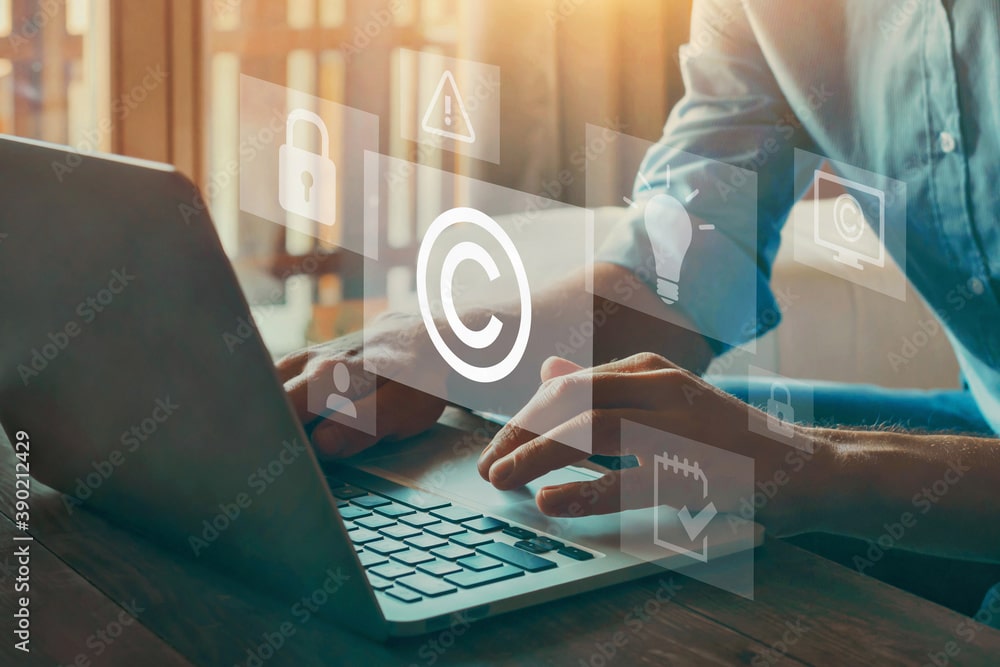The protection of an exclusive logo is a measure to protect the identity of the business against infringements and unauthorized use by competitors. A logo that has not been protected exclusively would easily be taken advantage of to make counterfeit goods, which would affect the reputation of the enterprise because the logo is designed and built uniquely and exclusively by the enterprise itself for its products/services.
So, how to protect this intellectual and creative product? The ideal solution is to protect the logo according to the law. Enterprises that have protected their exclusive logos could avoid arising disputes and unnecessary troubles.
Let's find out useful information about exclusive logo protection through the following NPLaw's sharing
The quickest way for an enterprise to convey information about its products/services is through a logo. A logo is not simply a beautiful and unique image, but also the personal story of the enterprise that you want to convey to customers and partners.
For example, the logo of Apple is an apple with a bite, where the word "bite" is pronounced similar to "byte" (a technical term) and the apple is inspired by the famous scientist Newton, who discovered gravity. Or the logo with the arrow mark, which is associated with a smile, showing the cheerfulness of Amazon employees to customers. Moreover, Jeff Bezos also brings another message to customers, which is diverse products from A to Z, and dedicated service from A to Z through the image of an arrow connected from A to Z.

Protecting an exclusive logo is protecting the company's unique features and meaningful stories with the legal tools of competent state agencies. The owner has the right to prevent infringement and unauthorized use by other individuals and organizations. According to current legal regulations, logo owners have the right to register for logo protection at the Copyright Office - Ministry of Culture, Sports and Tourism (register for copyright protection) and at the National Office of Intellectual Property - Ministry of Science and Technology (registered for trademark protection).
As analyzed above, Vietnam's law on logo protection has two methods: registration for copyright protection (for aesthetic work) and registration for the protection of trademarks.
So, how will the logo protection registration procedures for each method be conducted? How much does it cost to register for logo protection for each method?
Procedures for copyright protection registration
Step 1: Prepare documents for copyright registration.
Step 2: The dossier can be sent by post or directly to the Copyright Office or the representative offices of the Copyright Office in Ho Chi Minh City, Da Nang.
Step 3: Within 15 (fifteen) working days from the date of receipt of the dossier, the Copyright Office would consider, process, and grant a copyright registration certificate if the dossier was valid and met all the criteria.
In case the application is not granted a copyright registration certificate, a written refusal from the Copyright Office will clearly state the reasons to the applicant.
Step 4: Grant a copyright registration certificate to the owner of the protected logo.
Fees for registration of copyright protection at the Copyright Office:
Step 1: Identify the objects and contents to be protected.
Step 2: Look up and assess the registrability for the protection of the trademark.
Step 3: Submit a trademark registration application at the National Office of Intellectual Property.
In fact, the time for trademark registration may be shorter or longer, depending on the examination of the registration dossier of the National Office of Intellectual Property at that time.
Step 4: The owner will receive a Certificate of Trademark Registration granted by the National Office of Intellectual Property.
Fees for registration of trademark protection at the National Office of Intellectual Property:
The protection of exclusive logos is extended to all logo owners with both methods of logo protection as prescribed in the current Intellectual Property Law, specifically as follows:
Pursuant to Article 13 of the Intellectual Property Law, authors and copyright holders with works that are protected by copyright include:

Pursuant to Article 87 of the Intellectual Property Law, organizations and individuals that have the right to register for the protection of marks include:
As analyzed above, Vietnamese law provides for logo protection in two places: the Copyright Office - Ministry of Culture, Sports and Tourism (registration for copyright protection) and the National Office of Intellectual Property (registration for protection of trademark). Therefore, depending on whether the owner of the logo chooses a State agency to protect the logo, the logo will be protected in the following specific cases and conditions:
In case of logo protection registration at the Copyright Office - Ministry of Culture, Sports and Tourism:
Logos are one of the types of works that are protected by copyright according to Article 14(1)(b) of the Intellectual Property Law. Thus, logos are only protected in case the author directly creates with his intellectual labor, without copying from others’ works.
In the case of logo protection registration at the National Office of Intellectual Property:
Logos that want to be granted a certificate of protection at the National Office of Intellectual Property, would have to register for protection according to the regulations on trademark protection. In Vietnam's Intellectual Property Law, there is no definition of “logo”, but “logo” has the characteristics of a typical legal sign of a trademark as prescribed in Article 4(16) of the Intellectual Property Law: “A trademark means any sign used to distinguish goods or services of different organizations or individuals.”
Thus, according to Article 72 of the Intellectual Property Law, a protected logo must be in the following cases:
Refusal of logo protection at the Copyright Office - Ministry of Culture, Sports and Tourism:
Pursuant to Article 52 of the Intellectual Property Law, The State administrative body for copyright must notify the applicant in writing the reason for refusal to grant a certificate within 15 working days from the date of receipt of the application. Rejected logos usually fall under the following circumstances:

Refusal of logo protection at the Intellectual Property Department - Ministry of Science and Technology:
Pursuant to Article 73 of the Intellectual Property Law, the logo's sign will not be protected in the following cases:
A mark shall be deemed to be indistinctive if it is a sign falling into one of the following categories:
Logo protection is extended by law to give logo owners the option to protect their brainchild against infringement. So, between the two methods of exclusive logo protection, namely copyright protection and trademark protection, which method will be more optimal, avoiding all risks of infringement?
NPLaw would like to consult specifically and in detail through the following comparison so that customers could have a clear view of the protection of exclusive logos per the law:
|
Compare factors |
Trademark protection |
Copyright protection |
|
Purpose |
Identify your goods/services from those of competitive enterprises. |
Prove ownership with your creative, intellectual work, not for the purpose of distinguishing goods/services. |
|
Appraisal mechanism |
The work is carefully appraised with pre-registered trademarks. A logo granted with a trademark registration certificate shall be protected based on letters, words, drawings, images, holograms, combinations of such elements, represented by one or more colors. |
Based on warranties, commitments of owners and registered authors. Logos granted copyright protection registration will claim the legitimacy of the creation of aesthetic work. |
|
Scope of protection |
The logo will be protected comprehensively, if another party uses the same logo, it will be considered an infringement in the registered group of goods/services. |
|
|
Duration of protection |
Valid for 10 years, from the date of granting of the certificate (can be renewed for each ten years). |
Logos are aesthetic work (based on characteristics). Thus, the duration of protection is 75 years; since the work was first published. |
Copyright is a type of right that arises automatically when a creative idea is transformed into some objective form that others can perceive. Since the work is in fixed form, the copyright holder has been legally protected. Thus, intellectual property law does not require the right holder to register to be protected. However, copyright registration is also essential. This is the procedure for attribution of copyright. When there is a copyright dispute, the protection title will play an important role in proving copyright.
Through the above analysis, the protection of logos in the method of trademark registration and copyright protection registration would be optimal, reliable, and legal. Enterprises that want to prevent infringements should choose logo protection in both methods to ensure avoiding all risks arising in the future.
Each enterprise and each logo owner has different needs to protect their logo. Therefore, to avoid wasting time, effort, and expense when registering for exclusive logo protection, please contact our team of lawyers and legal experts specializing in the field of intellectual property from NPLaw. NPLaw's lawyers will advise customers to find a way to protect the company's logo in a comprehensive, accurate, and appropriate way.
If you need advice or more information, please send it to email: legal@nplaw.vn or contact directly at: 0931 449968. NPLaw will contact you as soon as required.
CÔNG TY LUẬT TNHH NGỌC PHÚ
Customer service: 19009343
Hotline: 0913 41 99 96
Email: legal@nplaw.vn